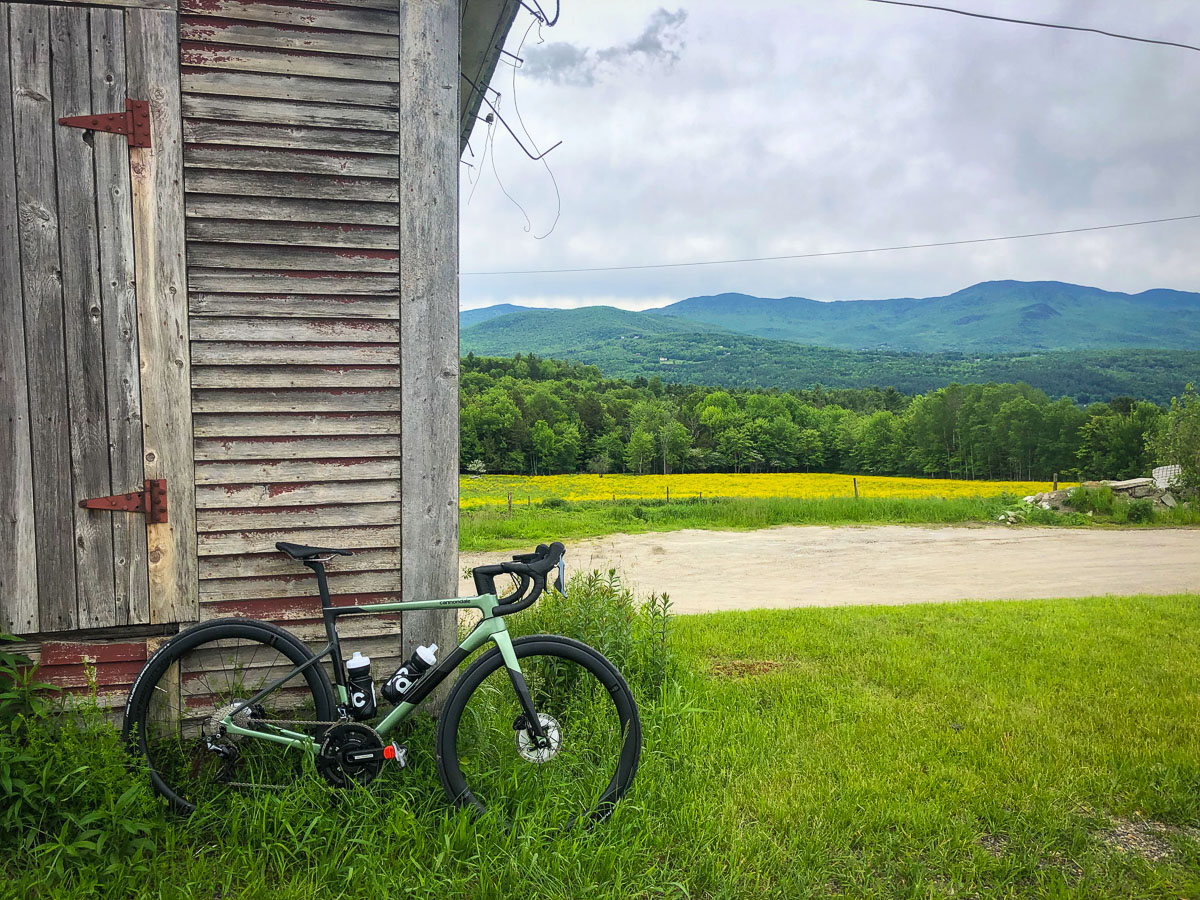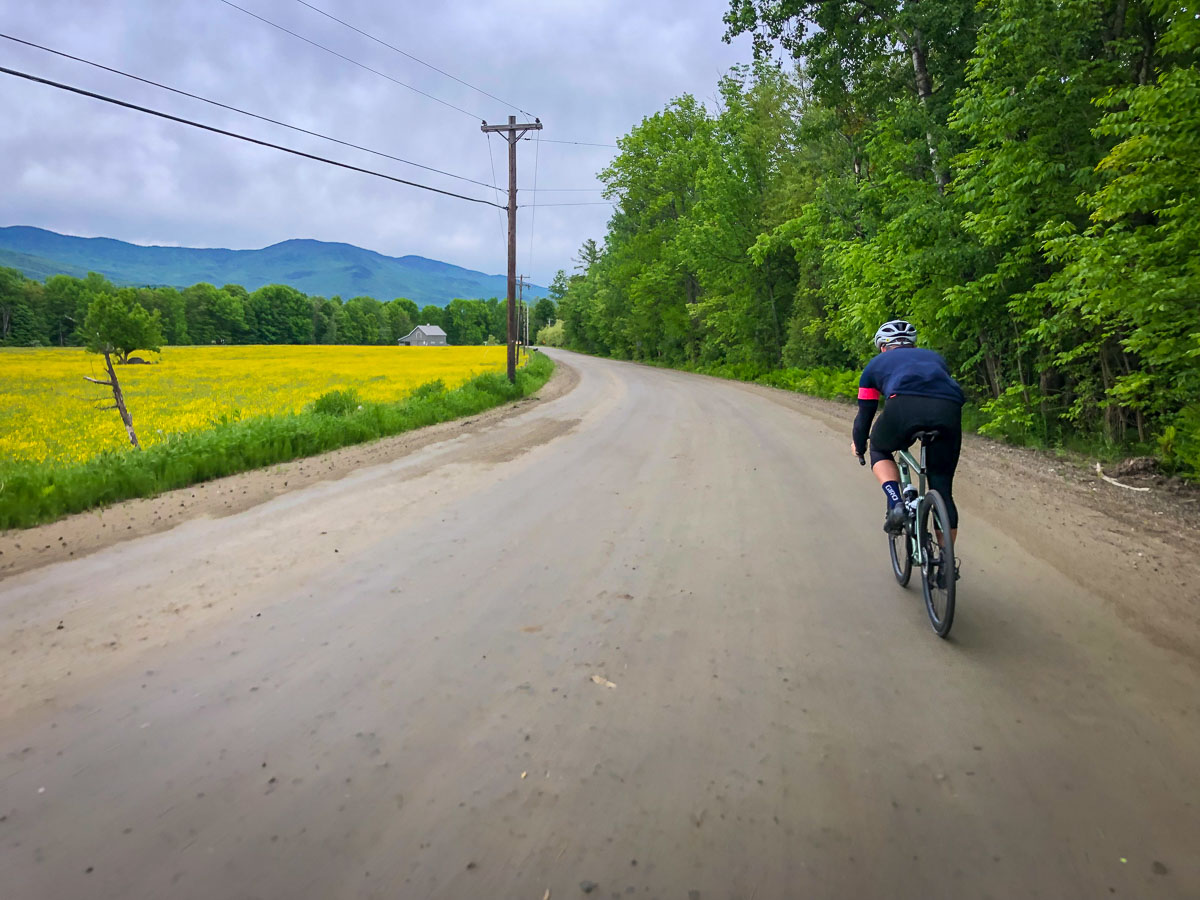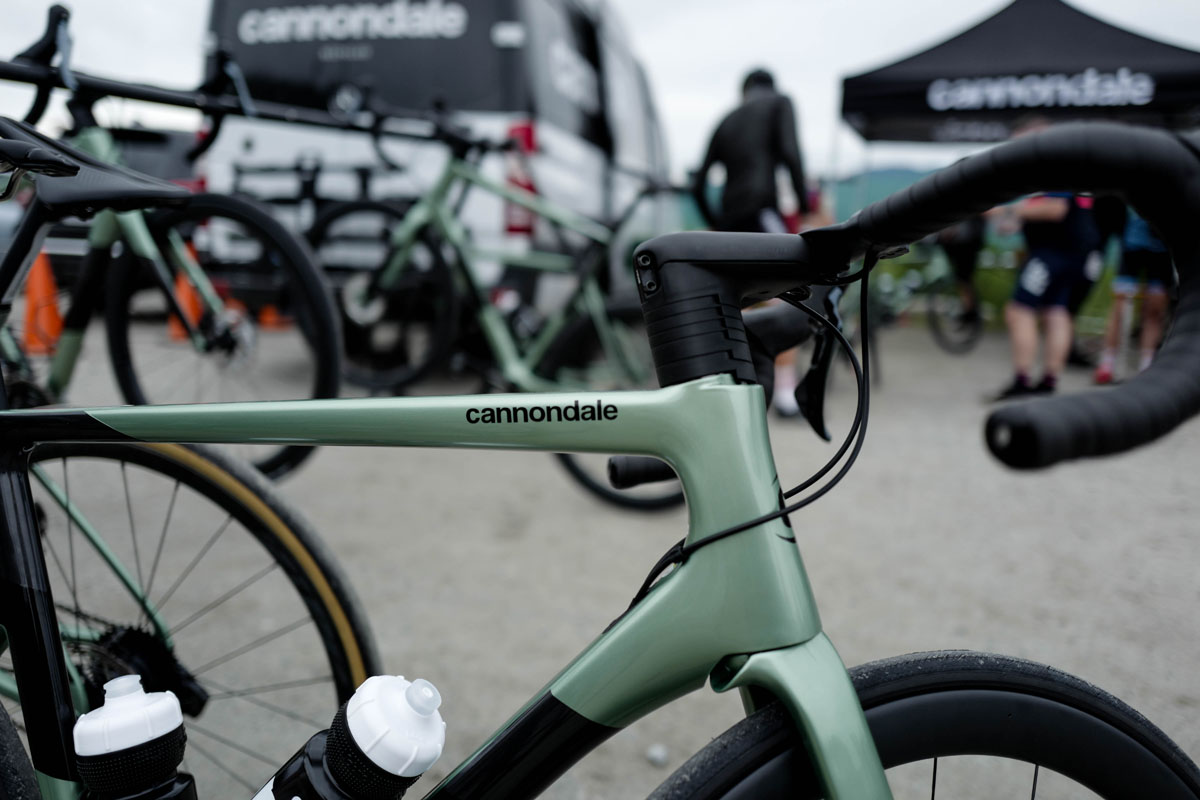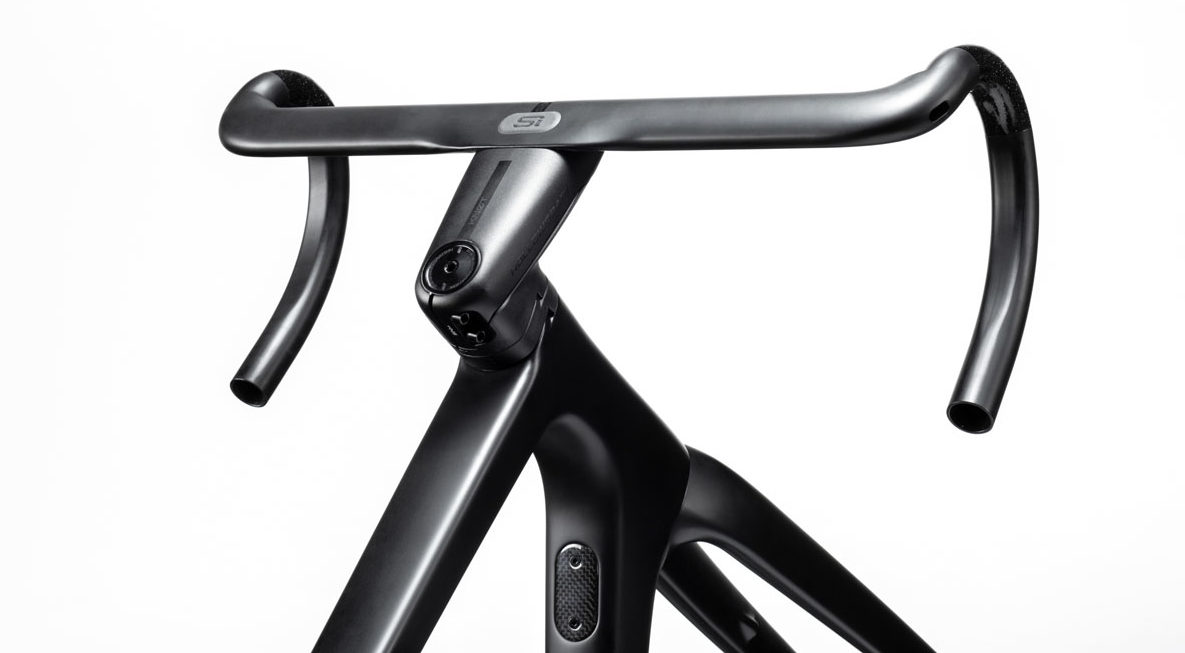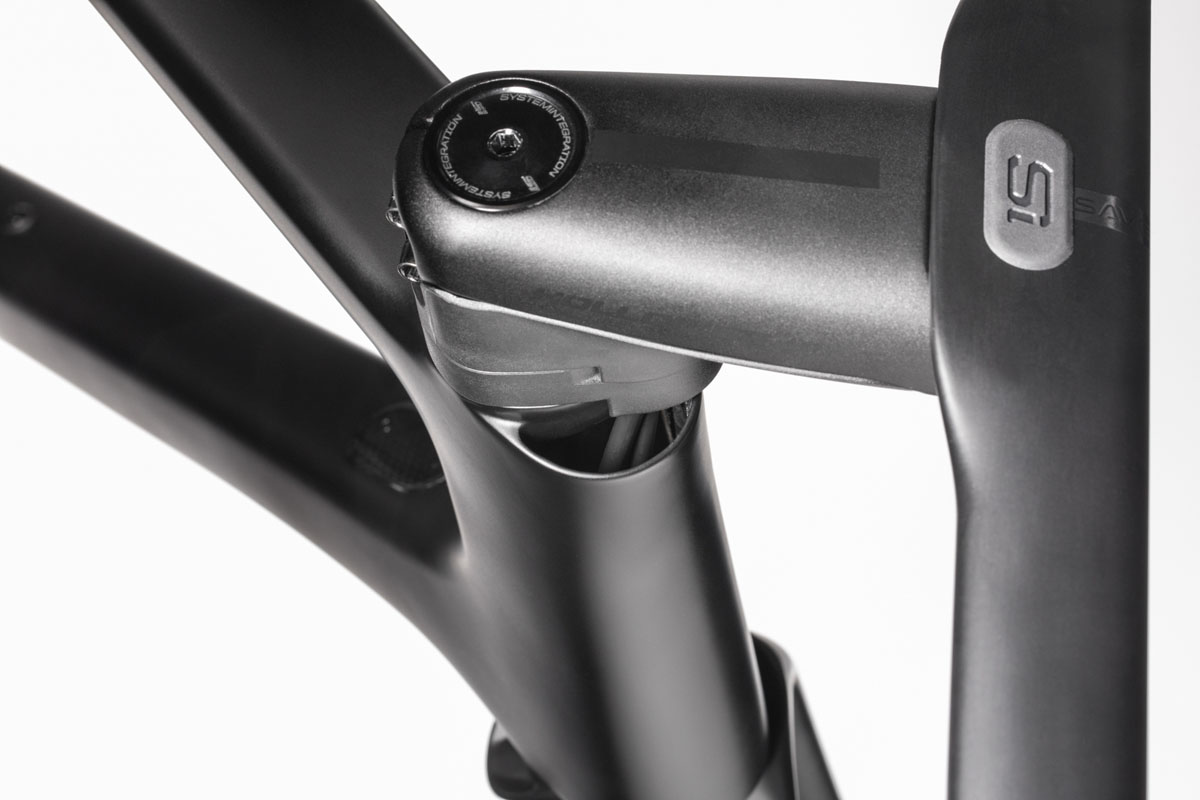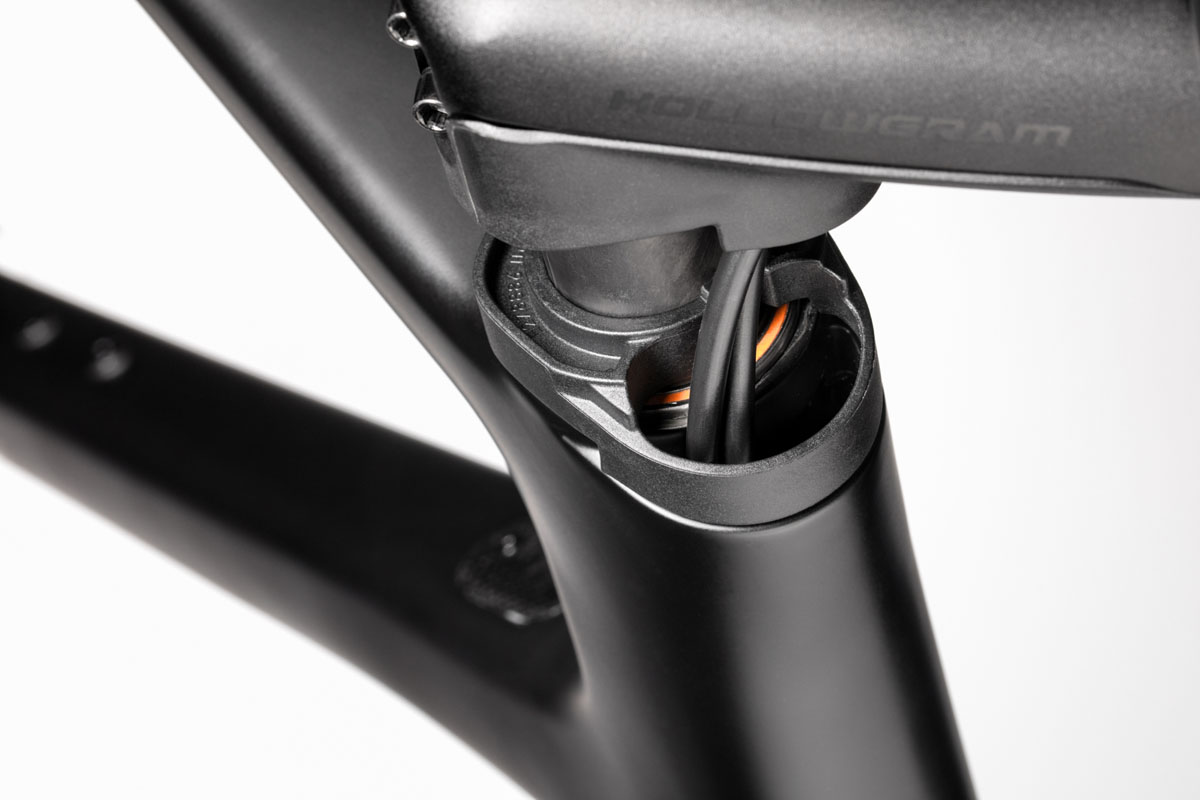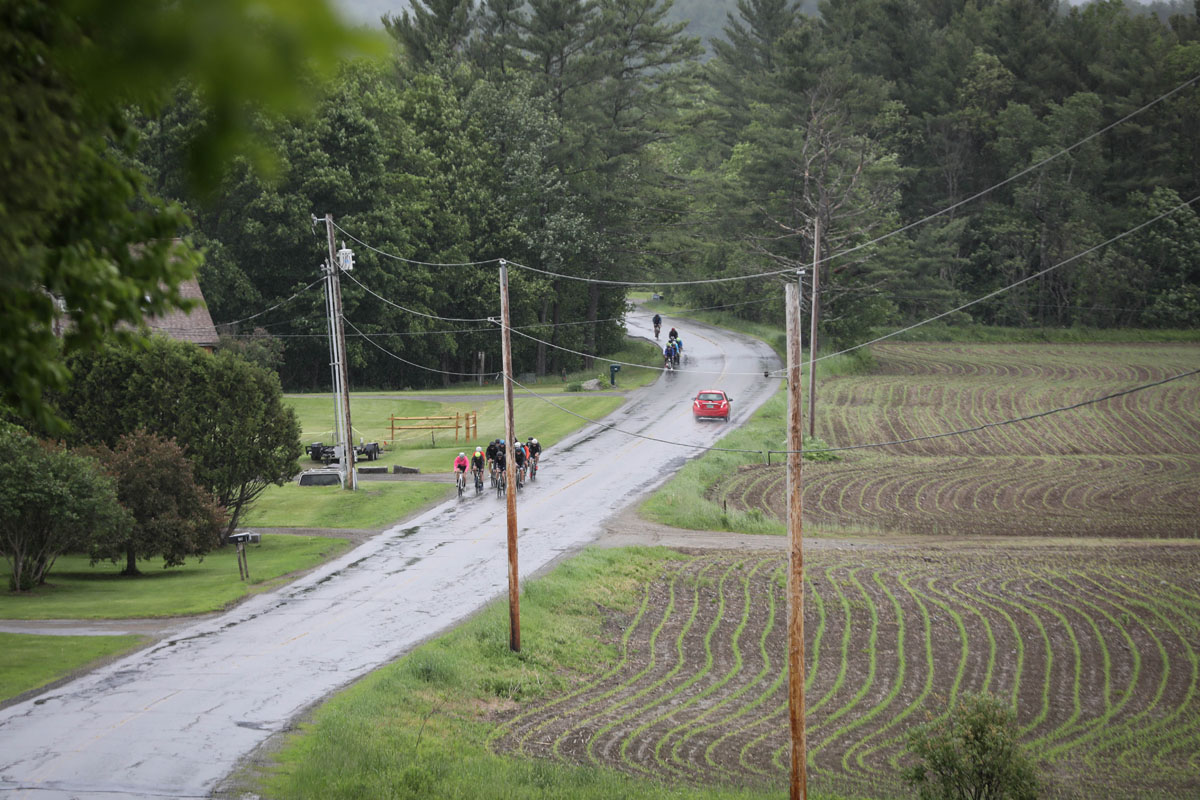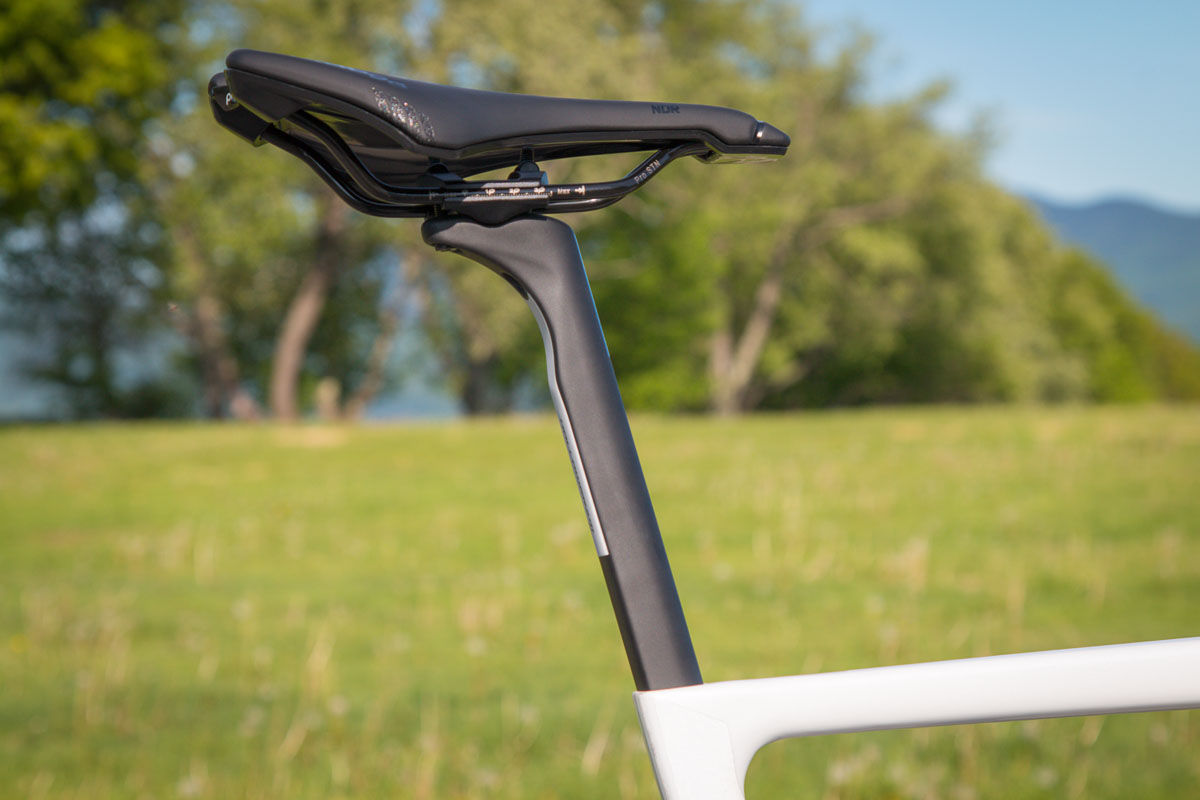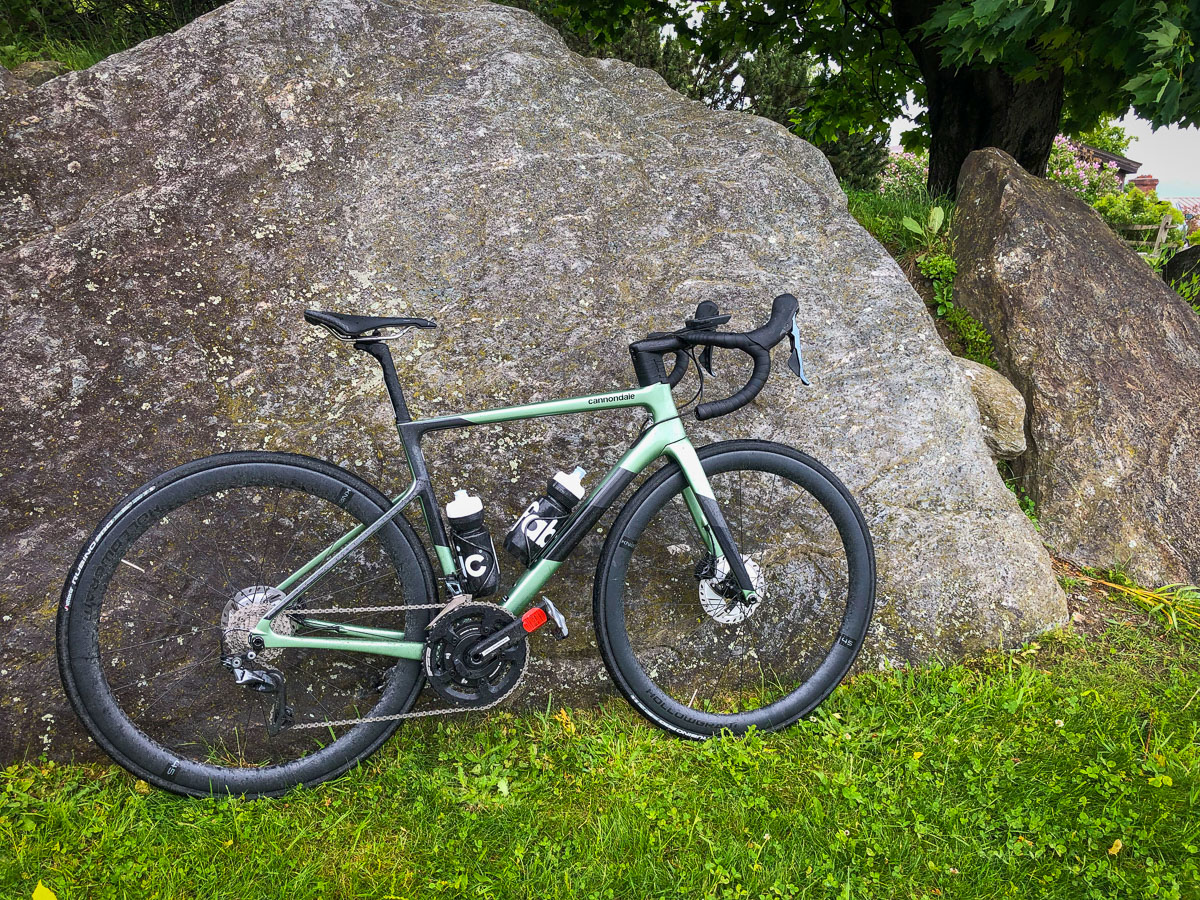In a move that’s becoming much more common, Cannondale had not one, but two new bikes for us to see in Vermont. The first was the new Topstone Carbon gravel bike which seemed uniquely suited to the mix of smooth gravel and awful pavement. The second bike would be the all new SuperSix EVO road bike. While the Topstone Carbon introduced a new rear suspension system, the SuperSix would rely on a mix of integrated features and new frame design to offer something more capable than the old EVO – but just as fast (or faster).
Perched high atop a hillside in Stowe, VT, the Trapp Family Lodge served as our base camp which meant finding out how the EVO descends right off the bat. On a cold, overcast morning, we set off down a steep, long, winding road which culminated with a stop sign just as you hit maximum velocity. The brakes work. Check.
Settling into the ride, a few things become quickly apparent – mostly in terms of comfort. This bike instantly feels like quite the departure from the diamond frames of EVO past. The roads of Vermont helped to hammer that home – literally. With some of the worst pavement on the road shoulders that I’ve had the privilege of riding, the pristine dirt roads seemed like a needed respite from the blacktop labyrinth. Truthfully, many of the roads were absolutely beautiful, but it was the most traveled stretches needed to connect the ride that were a mess. On the bright side, that helped to convey the new EVO’s composure when things get dicey in a pace line on a narrow shoulder on a busy road.
While the EVO always felt completely in control, the geometry strikes a solid balance between confident handling and all out speed. To me, this is the perfect blend of characteristics when it comes to a modern road bike. I personally don’t do any road racing, but you could easily pin on a number and hop on an EVO. But just as likely, you could slap on some massive 30mm tires and have yourself a fast, comfortable bike to ride all day long.
Personally, I think the front end of the SuperSix EVO looks great – with a slammed stem. Unfortunately for me, the short head tube means even with a pile of spacers, there is still a drop from the saddle to the bar and the resulting stack beneath the stem isn’t exactly appealing. At this point you’re probably saying, “yeah, well you should #slamthatstem,” and you’d be right – if your fit allows it (I probably would have dropped mine a bit if we had more time at the start of the ride, there were a lot of journalists wanting to lower their stems and fewer sets of tools). Then you’ll have a better looking front end that also fits well. Otherwise, you’ll just have to deal with the looks if you prefer a higher bar.
Spacers aside, I do quite like the semi-integrated KNOT bar and stem used on the EVO. This seems like the best of both worlds – you get the looks and performance of an integrated bar and stem but with the ability to adjust the position of the bar and the ability to customize the stem length or bar width. Not to mention that the integrated cable management seems like a good way to hide the cables without going through too much hassle for the mechanics.
The optional Garmin/Wahoo mount is a nice touch, though I wish the Wahoo “setting” had an indent that locked the GPS in place. But even without it, it’s tight enough that the head unit didn’t move much during the ride on some very bumpy roads.
For a ride that started off with decent weather, things quickly changed with an incoming storm that soon brought a good amount of rain and strong winds. Those winds proved interesting as we got to experience what the EVO is like to live with in severe cross winds. Other than the usual buffeting that you would experience on any bike in those conditions, the EVO seemed more than happy to hold its line through the exposed valleys.
The only brief concern for the new bike came in the form of slipping seat posts. Initially, the proprietary seat posts were torqued down to roughly 6Nm using the hidden binder wedge under the top tube. Cannondale says that it was a case of not enough grease on the internal parts of the binder wedge, along with insufficient carbon paste on the seat posts, or simply not enough torque which led to a number of journalists that saw their posts slip over the first half of the ride. Cannondale’s official response was, “the posts were not properly prepped for the first portion of the ride, which led to some riders having slipping issues. We have reinforced the importance of following the instructions on pages 15-17 of the OMS, specifically in regards to the grease call-out on the seatpost binder, which will ensure a positive experience is delivered to our riders.” According to the Cannondale Owner’s Manual Supplement (pages 15-17), the specified torque is still 6Nm when the wedge is properly greased and the post has carbon paste applied.
Eventually, higher torque settings seemed to fix the issue (Cannondale’s mechanics said they had upped it to about 8Nm during the coffee stop since they didn’t have the ability to remove and grease the wedges of each bike), and I finished the second half of the ride with the saddle in the same place.
Otherwise, the first ride on the SuperSix EVO was quite a fun experience. For a ride over far rougher terrain than the average pavement ride, the EVO rode exceptionally well. It’s a bike that seems confident and stable over a wide range of conditions but still has a lively, fast personality. This seems to strike a great balance for what I would consider the ideal modern road bike – fast, comfortable, aerodynamic, relatively easy to work on, and most importantly, fun to ride.
